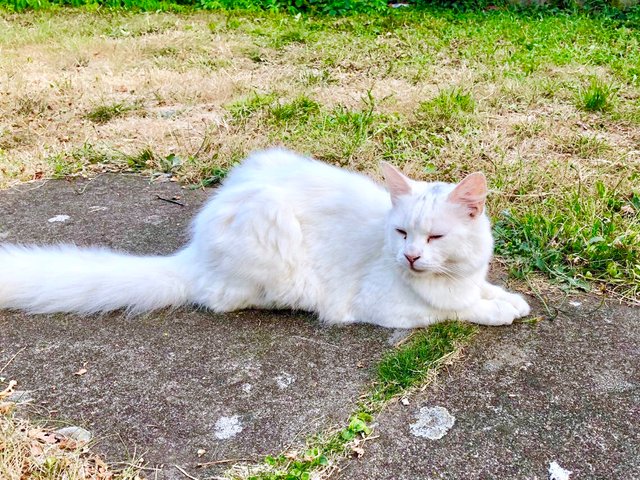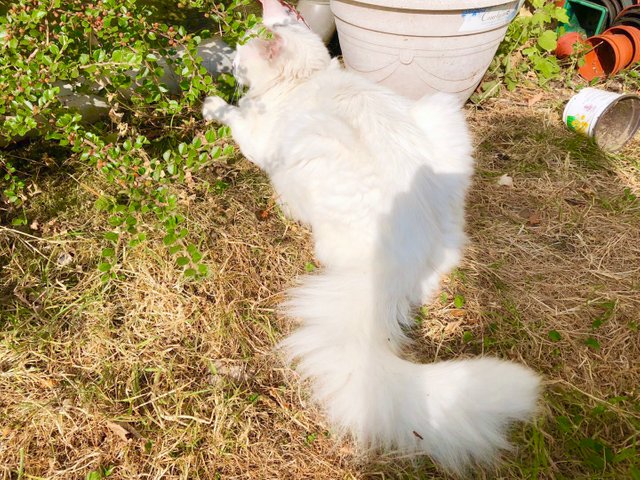Cat Intelligence and Behaviour II

Communicating with Cats
In any bond between owner and pet, communication is an essential part of daily life. As always, communicating is a two way street that needs to be reciprocated by both parties. Unfortunately, most of the understanding will have to come from the owners’ side to establish a connection.
Through observation and awareness, many behavioural actions can be picked up on and interpreted. Certain actions or sounds will indicate hunger, content and a number of other emotions a cat is feeling. Cats are social creatures and their communication skills reflect this and will sometimes meow for attention or general communication. In some instance this can turn into extended meowing, almost as if a conversation is being had.
Knowing the difference between being pleased and unhappy is key. Purring sounds indicated an emotion of content. It’s no surprise when feeding a cat, a constant purr can be heard that expresses the joy when feasting on a meal. Even kittens will purr when feeding from their mother as a form of communication to show they are receiving what is expected. The mother (queen) cat will be able to recognise the sounds made by her litter as they have unique sounding purrs.
It’s important to recognise what makes a cat happy and how this can be used as a learning experience to form a stronger bond of communication. Incentivising and using the emotion of happiness is a powerful tool in developing an ongoing relationship between cat and owner. This may also play an important role when trying to strategically time grooming or washing sessions. Cats will generally be a little more receiving when in a better mood as opposed to being in a foul one.
Similarly, it’s important to know when a cat is experiencing anger or unhappiness. This will come in the form of many sounds. Hissing is a common defensive sound that cats will audibly project when they feel threatened or want some space. It’s often important to understand the root causes of this discomfort and reassure a cat if they feel a sense of alarm. Discomfort and pain can be indicated by yelling and high pitch screeches.
Cats often communicate amongst themselves also. It is perfectly normally to hear frantic barrage of high pitched meows between feline friends. This is usually not a cause for concern as they are simply communicating. If signs of aggression in the form of hissing occur then close attention should be paid. High pitched calls can also indicate a cat being in a state of heat.
In any bond between owner and pet, communication is an essential part of daily life. As always, communicating is a two way street that needs to be reciprocated by both parties. Unfortunately, most of the understanding will have to come from the owners’ side to establish a connection.
Through observation and awareness, many behavioural actions can be picked up on and interpreted. Certain actions or sounds will indicate hunger, content and a number of other emotions a cat is feeling. Cats are social creatures and their communication skills reflect this and will sometimes meow for attention or general communication. In some instance this can turn into extended meowing, almost as if a conversation is being had.
Knowing the difference between being pleased and unhappy is key. Purring sounds indicated an emotion of content. It’s no surprise when feeding a cat, a constant purr can be heard that expresses the joy when feasting on a meal. Even kittens will purr when feeding from their mother as a form of communication to show they are receiving what is expected. The mother (queen) cat will be able to recognise the sounds made by her litter as they have unique sounding purrs.
It’s important to recognise what makes a cat happy and how this can be used as a learning experience to form a stronger bond of communication. Incentivising and using the emotion of happiness is a powerful tool in developing an ongoing relationship between cat and owner. This may also play an important role when trying to strategically time grooming or washing sessions. Cats will generally be a little more receiving when in a better mood as opposed to being in a foul one.
Similarly, it’s important to know when a cat is experiencing anger or unhappiness. This will come in the form of many sounds. Hissing is a common defensive sound that cats will audibly project when they feel threatened or want some space. It’s often important to understand the root causes of this discomfort and reassure a cat if they feel a sense of alarm. Discomfort and pain can be indicated by yelling and high pitch screeches.
Cats often communicate amongst themselves also. It is perfectly normally to hear frantic barrage of high pitched meows between feline friends. This is usually not a cause for concern as they are simply communicating. If signs of aggression in the form of hissing occur then close attention should be paid. High pitched calls can also indicate a cat being in a state of heat.

Enjoyable read as always @thecatfiles! It seems a good chunk of your post is actually duplicated; probably unintentional double-entry from copying and pasting (twice) from your text editor.
But yes, communication is important... and it's interesting how cats have certain types of meows they ONLY use to communicate with their humans, not with other cats.
=^..^=
To listen to the audio version of this article click on the play image.

Brought to you by @tts. If you find it useful please consider upvoting this reply.
Hola amiga, creo que paso algo en tu publicación. Somos humano y nos equivocamos. De igual forma entendí tu mensaje. Muy bueno el tema de la comunicación de los gatos. Ya se que el ronroneo es cuando los gatos están felices.